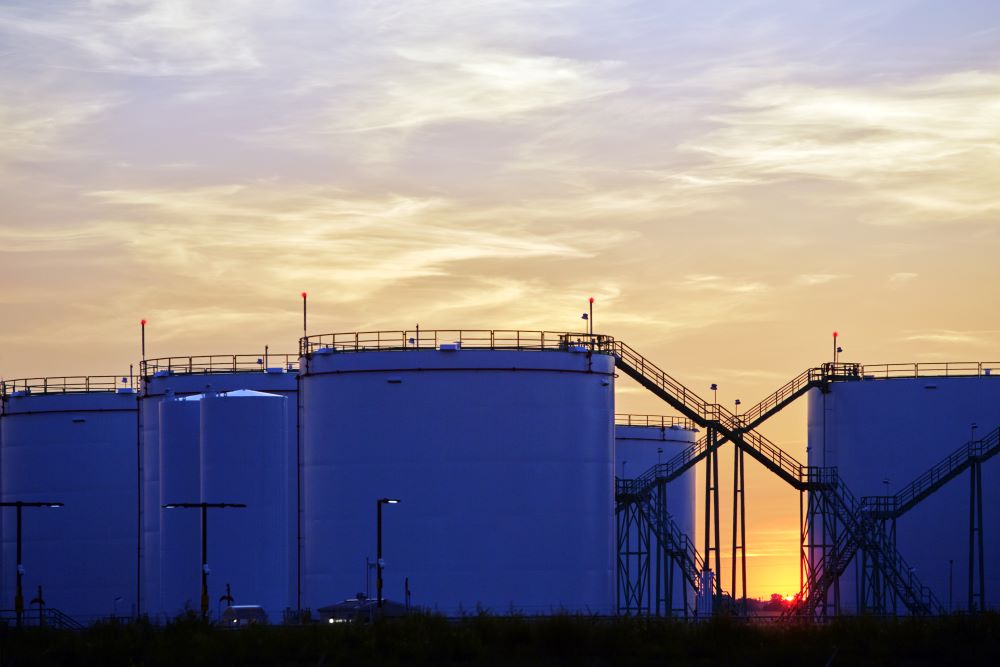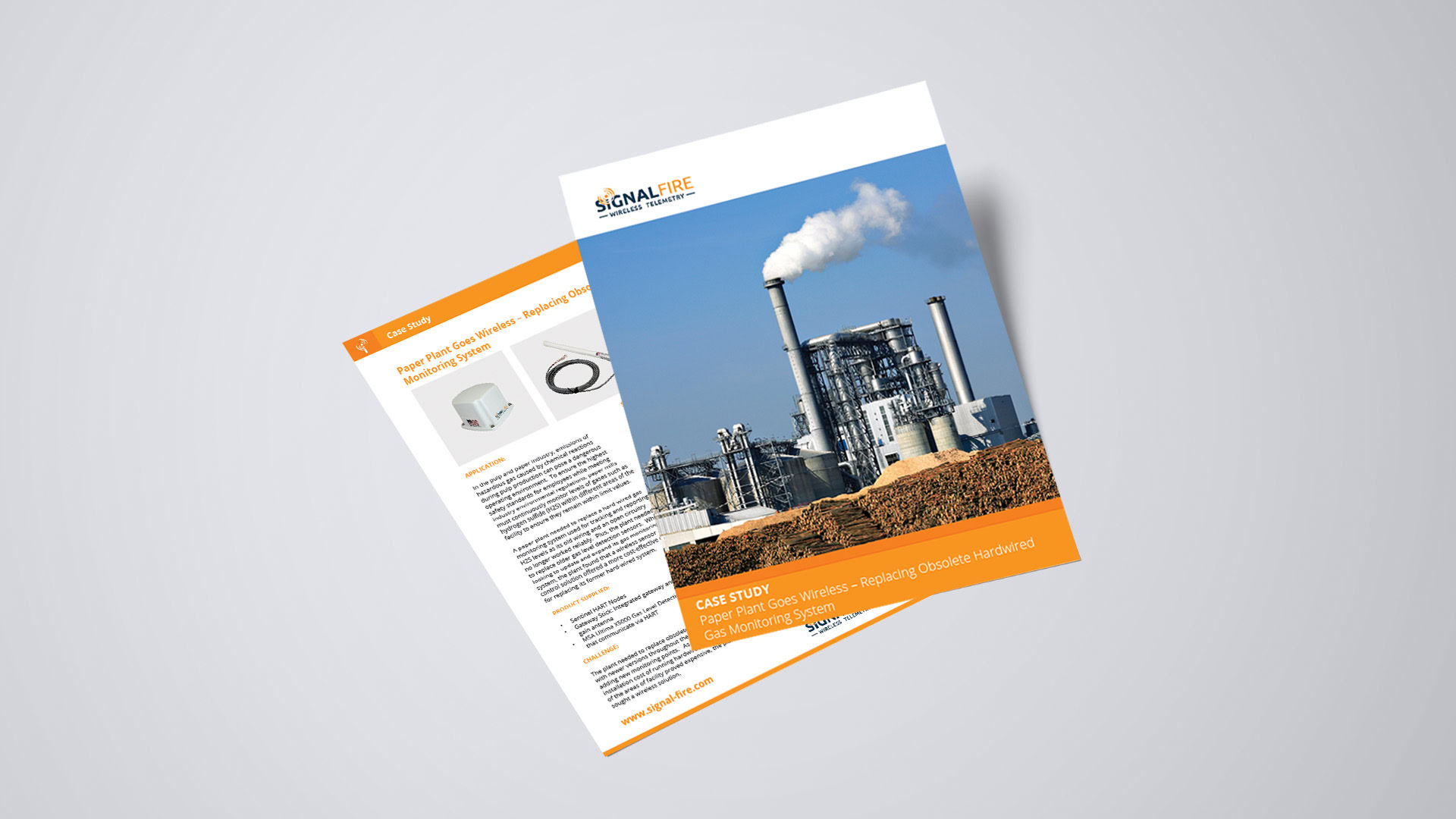
Get in Touch With Us and Tell Us About Your Toughest Monitoring and Control Challenges.
SignalFire Telemetry products connect you with crucial product and hardware data at any of your oil and gas operation sites—whether it’s a pump, pipeline, or storage tank.

SignalFire Telemetry devices install anywhere water asset monitoring is needed, whether it’s for collection purposes, treatment, or delivery.

SignalFire Telemetry devices can monitor key assets and can do it affordably, without any renovation or high-priced engineering costs. They install easily with no required cable or additional power. The data is available on your phone or computer and the cloud service can even output to your corporate system to integrate with the rest of your data and keep your operation running.

SignalFire Telemetry devices can monitor and manage water supplies and additives throughout the property, helping you avoid catastrophic shortages and keep your irrigation plan on track.

Avoid costly product loss in bulk storage tanks, terminals, and transportation movements. Whether calling for tank levels, gauge pressure, or even movement pumps or pipelines, SignalFire products can fill any monitoring gap throughout a facility.

Environmental fines for businesses are be frustrating and can bring business to a standstill until they’re worked out. No business wants to hurt the environment, and in competitive markets stopping production affects the bottom line and staff. But there are effective and affordable solutions with SignalFire Telemetry devices.

Expand visibility and control of your refinery or petrochemical processing facility without expensive renovations or redesigns. And do it with your current gauges and hardware. SignalFire telemetry devices are designed to work in harsh chemical environments and meet the strictest safety and security standards

No matter the size of your service map, monitoring remote assets ensures efficiency and keeps your operation in compliance. That’s how SignalFire devices can really help, offering the most affordable and effective monitoring solution that will monitor liquid, gas, electricity, and other assets.

Explore the diverse applications of SignalFire Wireless Telemetry Systems across different industries.

Access our latest brochures to explore comprehensive information about our products and services.

Easily find the sensors that are compatible with our systems on this dedicated page.

Explore a comprehensive collection of images showcasing our products, installations, and real-world applications.


As the industry moves to remote instrumentation to monitor different aspects of operations, the Signal Fire Remote Sensing System™ (SFRSS) offers wireless remote management of a variety of assets in challenging, large-scale environments such as oil and gas fields, petrol processing plants, agriculture, water systems and the public infrastructure. Staying connected to what is happening with equipment, environmental conditions, supply/water levels and other operations is an essential – and challenging – task to remain productive in any industry.
By monitoring the status of different performance parameters in real-time, the SFRSS helps refineries, farms, wastewater treatment plants, food processing plants and other industries stay connected with assets and operations in real-time. More than automating data collection, these wireless telemetry systems are configurable to shut down operations or send an alert when reaching a threshold. Collected data is downloadable into analytics software for better asset management and to connect workers by laptop or smart device in diverse and remote locations for greater collaboration.
At the heart of the SFRSS is a Gateway and remote transceiver Nodes that power and communicate with sensors that collect data from operations. In a tank level monitoring application, a level sensor would provide intelligent data on the water levels in the tank and a pressure sensor would detect pressure levels in that same container. Nodes wirelessly collect data from a variety of sensors and transmit the intelligent information to Gateways. With Gateways able to accommodate many nodes, a wireless sensor control network can cover a geographic range of hundreds of square miles. Linked to the Internet and back-end servers, Gateways bring data from the Nodes in various formats such as 4-20mA, Modbus, and HART protocols. Data is accessible by PLC in a control center or Internet connection through a laptop or tablet. Users can even move data to the cloud or a backend server for long-term historical analysis (see graphic 1).

Graphic 1: Shown is a representation of the different components and communication interfaces of a SignalFire Remote Sensing System.
With an open architecture mesh network that interfaces with virtually any sensor type, the SFRSS enables asset managers to monitor and access various field data using a mix of different sensor types to control pumps, valves, lighting and other devices in one network. Users can choose the best sensors for an application such as:
More cost-effective and scalable than wired systems, Signal Fire’s wireless control systems operate in remote locations over difficult terrain, eliminate costly cable and trenching, and are less susceptible to lightning strikes. While nothing can survive a direct hit, a wireless system struck by lightning loses only one asset, versus the loss of the entire network. Operating as a stand-alone battery or solar-powered system, the SFRSS can prove very cost effective and convenient, especially in areas with regular power outages or no power at all.
Wireless systems, along with their attached sensors, can be set up, configured, and tested in the shop before taken to the field for installation. Operators report that field installation times can be reduced by up to 75% using preconfigured wireless sensor networks.
Tank-level monitoring is a typical wireless application used in upstream pumping, oil and gas, wastewater, agriculture, and other industrial applications to eliminate run-outs and overflows while optimizing and ensuring the integrity of operations.
Download the article Justifying the Move to Wireless Tank Monitoring
Get in Touch With Us and Tell Us About Your Toughest Monitoring and Control Challenges.





"*" indicates required fields
This website uses cookies so that we can provide you with the best user experience possible. Cookie information is stored in your browser and performs functions such as recognising you when you return to our website and helping our team to understand which sections of the website you find most interesting and useful.
Strictly Necessary Cookie should be enabled at all times so that we can save your preferences for cookie settings.
If you disable this cookie, we will not be able to save your preferences. This means that every time you visit this website you will need to enable or disable cookies again.